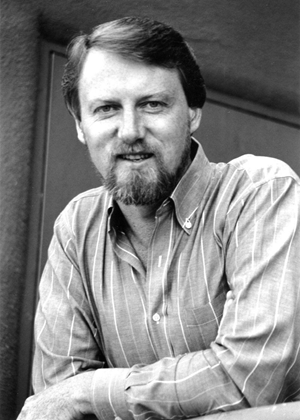By Josh D.
Today we celebrate the birthday of a true computer pioneer – Gary Arlen Kildall.
Let’s get this out of the way: That IBM PC Story
If anyone knows only one thing about Gary Kildall, it’s that in 1980 IBM approached him to negotiate purchasing an operating system for use with IBM’s forthcoming
IBM Personal Computer. The stories vary and the truth may never be known – some say Kildall blew IBM off, some say he was simply off on other business the day IBM representatives showed up to discuss the deal. Whatever the reason, he and IBM failed to negotiate an agreement, IBM went to Microsoft and the rest, as they say, is history. The PC came to dominate the industry, and Microsoft’s deal with IBM for PC DOS elevated them to insane levels of success.
It is unfortunate that most of what Gary Kildall is remembered for is (supposedly) flubbing the deal with IBM. Certainly it makes for a compelling story full of intrigue and backstabbing and lost fortunes, but Kildall’s contributions to computing history are more interesting than that, if perhaps less dramatic.
Origins
Kildall was born in 1942 here in Seattle, Washington and attended the University of Washington with the intent to become a math teacher, but he became enamored with computers while there. He began experimenting with the
Intel 4004 microprocessor after relocating to Monterey, California to fulfill a draft obligation: teaching at the Naval Postgraduate School. His new digs close to Silicon Valley kept him in touch with new developments in microcomputers, as well as the burgeoning hobbyist computing movement.
 PL/M
PL/M
In his spare time he worked as a consultant for Intel where he designed and implemented
PL/M – the first high-level programming language specifically for microprocessors. He also created an operating system designed to allow Intel 8080 systems to work with floppy disk systems called
CP/M.
Intergalactic Digital Research
Intel didn’t see the potential in CP/M, and so Gary and his wife Dorothy started their own company, Intergalactic Digital Research, to market it to the hobbyist market where it soon became a major success. CP/M found its way onto computers from hundreds of manufacturers, from desktop systems from MITS and IMSAI to laptops and luggables like the
Epson PX-8, the
Kaypro, and
the Otrona Attache.
The BIOS
Microcomputer systems at this time were varied: some had video displays with graphics, some still used Teletypes or dumb terminals. Some had hard drives or used 5.25” or 3” floppy disks. Getting them all to run CP/M and its many available programs and utilities would require adapting CP/M and these programs to each and every system they ran on – a monumental task. Enter the
BIOS (Basic I/O system), another creation of Gary Kildall circa 1976. The BIOS was an
abstraction, a tiny kernel of code that handled the machine-specific portions of CP/M. It told CP/M and the programs that ran on it how to read and write to disks, how to read input from the terminal, and other such low-level tasks. Instead of rewriting CP/M for each system, only a new BIOS would have to be provided, and a skillful programmer could write a new BIOS in a couple of days.
CD-ROM
Kildall started a company named
Activenture in 1984 to explore the possibilities that he envisioned newly available optical media would bring. Later renamed
KnowledgeSet Corporation, in 1986 it went on to produce
The Electric Encyclopedia, the world’s first CD-ROM based encyclopedia.
Computer Chronicles
Kildall was the co-host of a public television program,
The Computer Chronicles, from 1983 to 1990. Gary and the other hosts used the platform to bring information and insight about the rapidly growing computer market to the masses. Many episodes are available on YouTube right now and you should definitely check them out.
The End
Gary Kildall left this world far too soon at the age of 52 on July 11, 1994. He left behind a legacy of computing history and his work had an immense impact on the world of microcomputing. He is buried at the Evergreen Washelli Memorial Park in Seattle, Washington.
RELATED CONTENT:
[MS@45] How Microsoft changed the world – Part 1: Setting the stage
[MS@45] Enhanced Artifact Spotlight: Going Back to the Beginning with the Teletype Model 33 ASR
[MS@45] Tour Trailer: Altair BASIC